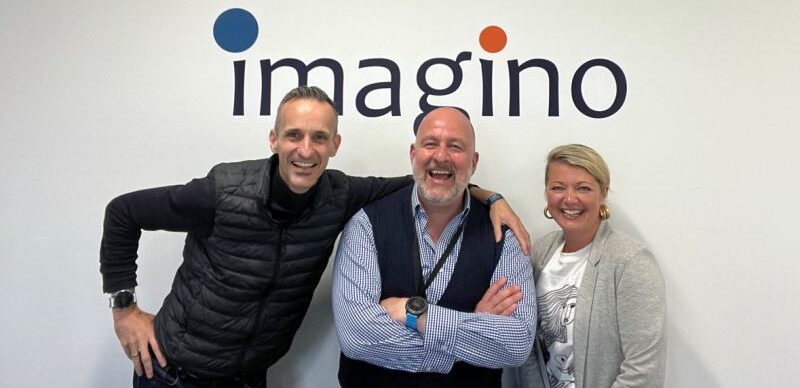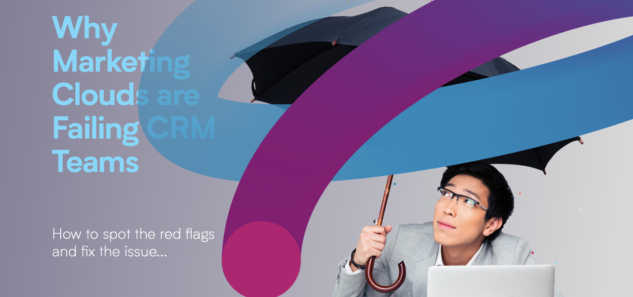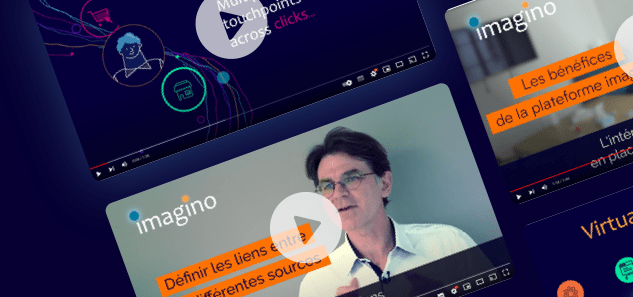I’m on the plane flying back from the US where 49,000 runners lined up at the start of the Chicago Marathon, on a Sunday morning, at 7:30 AM, at a time which most would consider too early for their dominical coffee… I was right at the front of that group, knowing it was going to be tough, and gruelling, but buzzing in anticipation!
The interest in Marathon running is surprising, we live in times of instantaneous gratification, ever shorter attention span, home delivery and effortless rewards. Marathon training is just about the opposite. It requires months of training whilst success is never guaranteed. For repeat marathoners like me, it’s also no longer a bucket-list activity, instead, it has become a lifestyle, a mindset without which I would not have kept improving over the years nor got a new PB this weekend at nearly 45 years of age. It’s what I call, a long-term mindset.
This article is about how this mindset could apply outside of the running field.
The Importance of Cross-Field Perspective
Aside from being an avid runner, I have a passion for Software, currently focusing on data challenges and specifically Customer Data Platforms. The “CDP” field is rife with “experts” repeating various versions of the same story. You need our big Database to host your elusive single customer view that will answer all the data requirements of your business… At least that’s what we’ve been hearing for exactly 30 years. It was in 1993 that Thomas Siebel got the idea of supporting the pre-existing concept of CRM with a database, an idea he came up with whilst working with the big databases of the time, Sybase and Oracle.
In truth, few of those experts venture outside of their field and even less question why they think the way they do. This phenomenon is called “trained incapacity”, it’s one of the reasons new and novel approaches are hard to come by.
In his recent book called “Range”, David Epstein illustrates how much cross-field perspectives can be beneficial in solving hard problems where field specialists fail because they still are captive in their way of thinking. This is especially true when the field of action is complex and unpredictable. He supplies examples in engineering, chemistry and even medical research which are outstanding. Great book!
But the main point is that sometimes we need to look outside of our field to find that new angle, the approach that has made a proven difference in a completely different area, and which could bring a new perspective to a sticky problem.
Here is why I think the Marathoner mindset and approach could help solve the Data problem.
Embracing the Pain.
I’ve run many Marathons and there is one thing that has not changed, it still hurts. I get two-thirds of the way through, and it invariably becomes tough, really tough. And it’s not just me, Eliud Kipchoge, world record holder until last week, talks about how you must embrace the pain in both training and races. As per the well-known mantra, pain is inevitable, suffering is a choice. I know before the start that it’s going to be tough and that’s ok, there is no point pretending it’s not the case.
The parallel is that vendors are pretending they take the data pain away. They don’t. Your organisation has siloed data and those siloes still exist after the implementation of a CDP. The fact that there is another consolidated database in the middle (another Silo?) does not remove the silos. We need to embrace the existence of silos, acknowledge that pain and address the suffering it causes.
Does the CRM person who can access the data they need care about the underlying silos? No! So, let’s stop pretending that there is a data world without pain. There are silos, there is bad data quality and there is complexity. First acceptance, then we can talk about addressing the suffering. Or you can live in denial and buy the miracle marketing cloud that makes all problems disappear through magic AI… See you in two years.
Strength-to-Weight Ratio
Something all long-distance runners know is that every extra pound you carry has a massive cost. That’s partly through extra strain on the joints but also through energy expenditure to carry that weight to the finish line.
The issue is similar to software. Heavy solutions are costly to run. It doesn’t feel like a significant difference at the beginning because the vendors only share the top speed. That top speed is not sustainable in the long run. It’s like enrolling a 100m runner in a Marathon, they’ll be ahead for about 7 minutes. Very powerful but too heavy, they are not built for the long run.
Don’t get me wrong, strong muscles are necessary but big muscles are vanity. You might need a powerful solution for your data, but not necessarily a big or expensive one.
Picking the Right Gear
I’m an avid runner. I tinkle with my diet, and I customise my training plan, only using best practices as guidance. It makes sense because every runner is different. But there is one thing which all runners do, we compose our running outfit with the rightest pieces of equipment that are in our price range.
I don’t make my shoes; I have an affordable pair of Hoka to train and a pair of fancy Nike Alpha-Fly to race. I’m an Apple fan but I don’t have a pretty iWatch because they’re useless for serious runners. (I have a Garmin Fenix 7, solid, 14 days of battery, extensive data…) My compression shirts and running shorts are from two different manufacturers, both inexpensive and practical, the short has a back pocket that fits just right for my iPhone, and the shirt is probably not for everyone, but it fits me particularly well and allows me to carry gels inside the sleeve. The neck warmer I got free somewhere, it’s unbranded and perfectly adequate.
The point here is that the overall outfit is composed of the specific items that are right for me.
You see, the big red and blue CDP vendors are trying to convince everyone that their “shoes” are the best if you also buy their shirt, their shorts, their watch, their headband and their sunglasses. Oh, and the carbon plates in the shoes are coming next quarter… Maybe someday Nike will make a good watch and Garmin will produce amazing shoes. Maybe, but unlikely, so right now I stick with the vendors that have the expertise and the product to back it up!
From the outside, the CDP situation looks fairly insane. Imagine a runner professing that they get every single item in their outfit through a Nike subscription that charges proportionally to how much they run, and how great and easier it is to just have one brand for everything! You would nicely recommend that they get checked for a concussion. But that is the value proposition of the marketing clouds and CDP.
Adapting to the environment
If a runner has only ever trained on one terrain and in one type of weather, they’re in for an unpleasant surprise. Remember Paula Radcliffe at the Olympics in Athens, she was the absolute best in the world, but the environment got the better of her. Over the years, I’ve run marathons in freezing rain and temperatures of nearly 100 degrees Fahrenheit. I’ve run courses defined as “fairly flat” turning out to be “hand on knees” steep. It’s never twice the same, and it’s rarely what you expect.
Running uphill requires a different technic from running on the flat or even downhill but it’s not just the technic, it is the gear that you need to adapt. The shoes that are light and responsive in dry weather might retain water and become a hindrance in even just a drizzle, whilst rocky trails will require sturdier shoes with more grip. I have a camel pack to carry water on super-hot days, but I don’t take it every time because it’s heavy. I might wear my Fenix 7 watch for a marathon but switch to the 920xt for a triathlon because I have the bike holder. You get the idea…
Adapting means that you can change based on your environment and how you feel. It means using your experience and what you’ve tried so far to tackle the run at hand today. Not the 10km run last week or the half marathon next month. What’s in front of you today?
In business, the concept is known as agility which is often amalgamated with the Scrum project methodology. Agility should be more than how you manage a project, it’s a business mindset.
There are many reasons businesses are not agile. One is cost, like being able to technically wear any shoes but only being able to afford one pair. Another one is knowledge, like having the energy gels but not knowing when to take them or how to consume them whilst running. And of course, it’s because change is difficult, technically but also psychologically.
The challenge is that the environment is quickly changing. It was 28 Celsius in Chicago on the Friday before the race and 8 Celsius two days later. For businesses, the environmental changes manifest as COVID-19, supply chain pressure, cost of living crisis, climate change or interest rates. Yet too many businesses suffer from the belief that they cannot change quickly, that data projects always take years, and that change needs to be complete and expensive. Self-limiting beliefs!
Takeaway
When you start running, completing a Marathon seems impossible. Once you embrace the long-run mindset, completing 42km is just one of the things you can do. Before you know it, you’ll realise that the same mindset can take you through a 100km run.
Imagine what your business could do if it embraced that same mindset! It’s time for a modern and agile approach!
For more resources explore our latest eBook, We’re Here to Slay the CDP Monster and whitepaper Why Marketing Clouds are Failing CRM Teams.

 Imagino Campaign
Imagino Campaign Our Customers
Our Customers Supporting Marketers
Supporting Marketers Our Partners
Our Partners Supporting IT teams
Supporting IT teams imagino & Innovation
imagino & Innovation Join us
Join us Our Team
Our Team Content
Content Videos
Videos Media
Media imagino in the press
imagino in the press